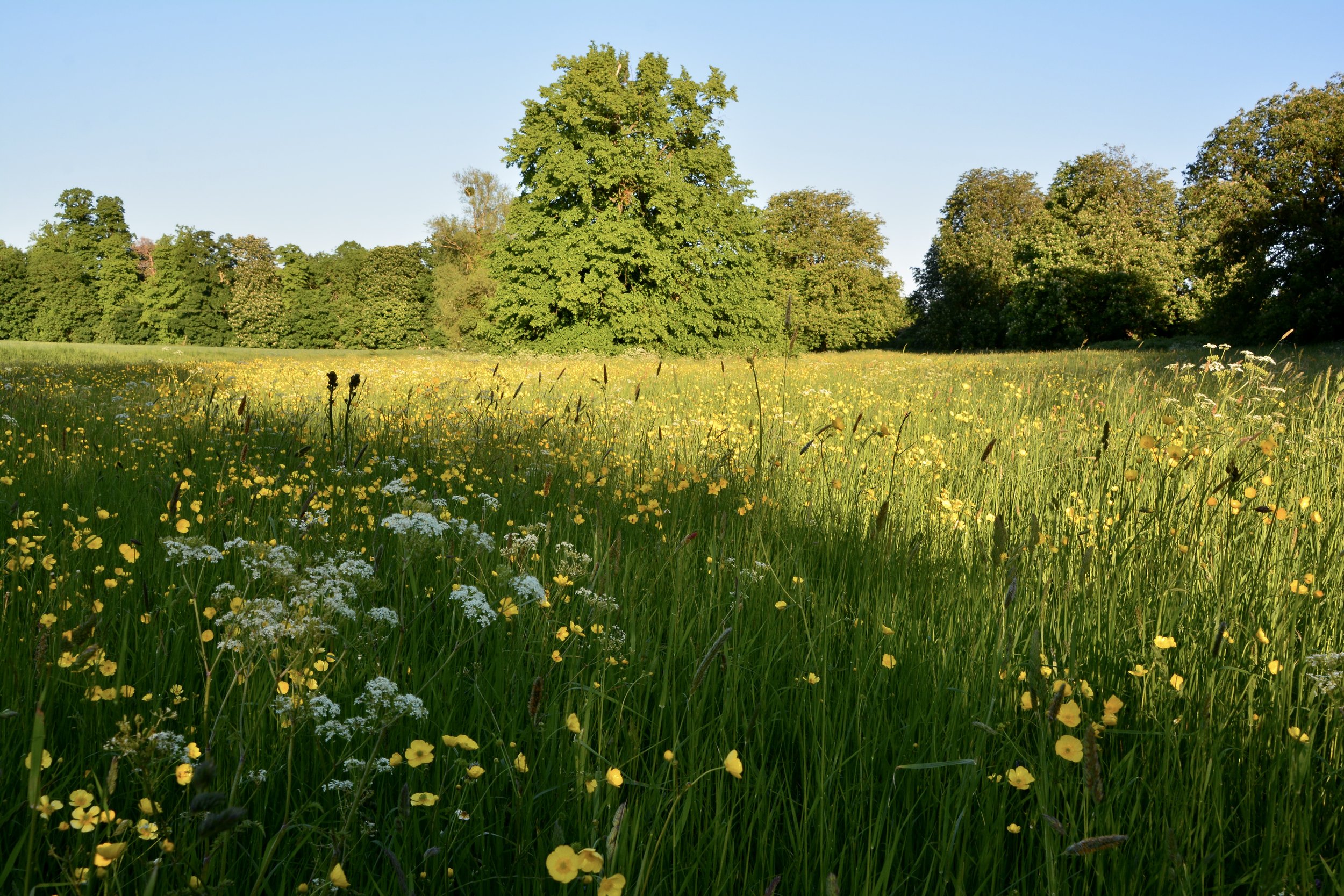
Long Meadow
Long Meadow is an ancient low-lying summer pasture. A hay meadow for as long as anyone can remember it supports around 120 species of wildflower and tree. Take a stroll through this classic English landscape: the wildflower meadow, the big mature field trees and the rippling stream.
To find Long Meadow you can find a map to its location here and how to get around it here.
Each species of grass has its characteristic seed-head. The meadow is spotted with colour: yellow buttercups, lady’s bedstraw and meadow vetchling, white yarrow, blue germander speedwell, purple black knapweed, dusky-pink red clover and the pink-and-white striped flowers of the field bindweed. Butterflies and bees flit from flower to flower. Sit down for a moment and you may hear the grasshoppers and crickets. Beetles and spiders wander through the grass.
A massive sycamore trunk stands starkly at one end of the meadow. Once a huge specimen disease has led to its demise, now its vast bulk provides a home for many creatures in what is known as a ‘habitat monolith’. There are stately horse chestnuts and lime trees with branches down to the ground. Birds nest in the trees, and in the dense, tall hawthorn hedge. In the hedge are elder and blackthorn and oak, elm and Norway Maple saplings. Wood avens, ground ivy and hedge bindweed grow under the hedge, and it’s a great place to look for blackberries.
Now take the path along The Brook. The water runs clear over the gravel and flints, and you can see tiny fish and water beetles in the stream. Watercress grows there, and on the banks are scented meadowsweet, great willowherb, forget-me-nots and saplings of dogwood and sycamore. Water voles have been spotted here, and kingfishers.
